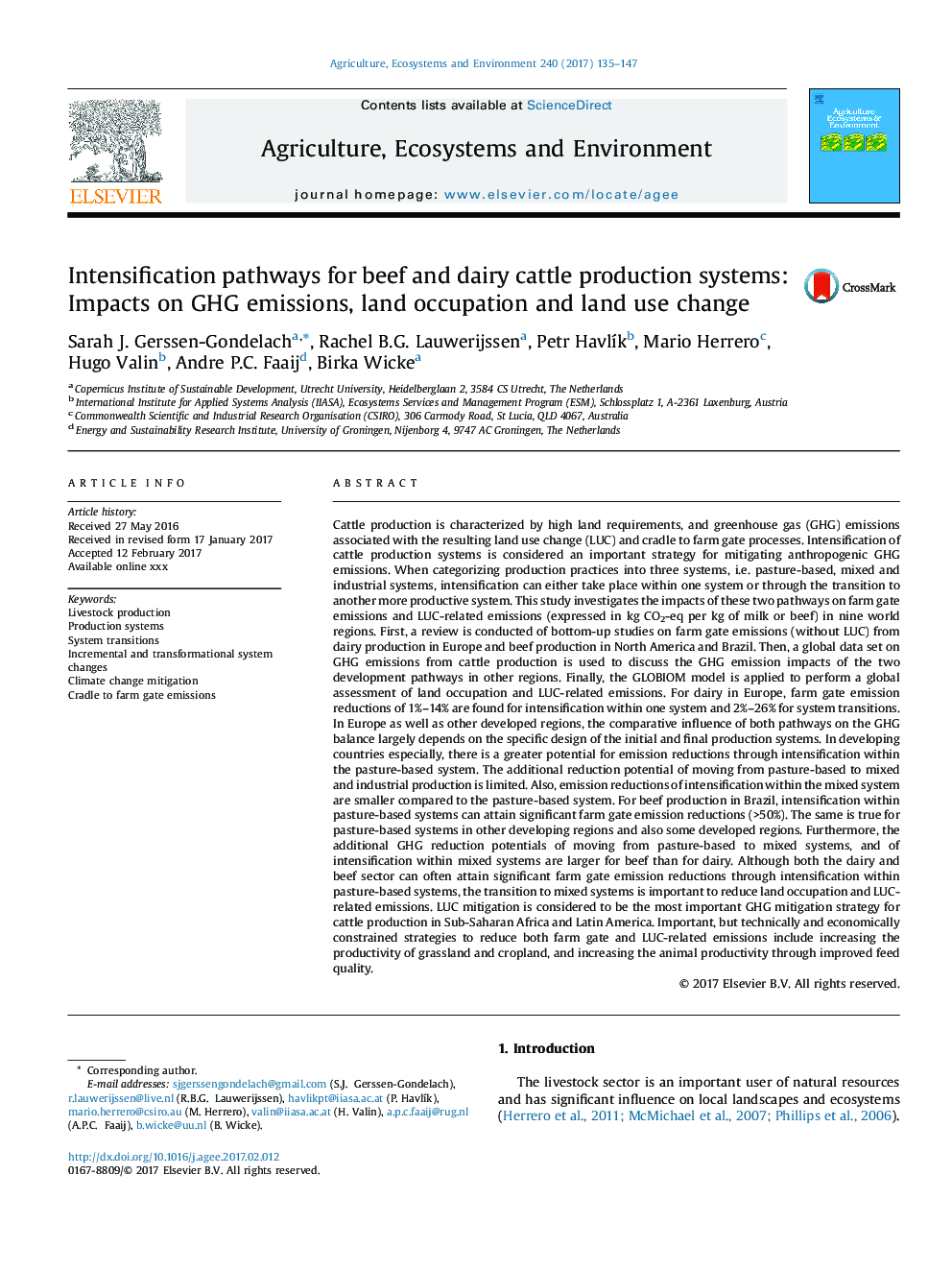| کد مقاله | کد نشریه | سال انتشار | مقاله انگلیسی | نسخه تمام متن |
|---|---|---|---|---|
| 5538162 | 1552012 | 2017 | 13 صفحه PDF | دانلود رایگان |
عنوان انگلیسی مقاله ISI
Intensification pathways for beef and dairy cattle production systems: Impacts on GHG emissions, land occupation and land use change
ترجمه فارسی عنوان
راه های تقویت سیستم تولید گاوهای گوشتی و لبنی: تاثیر بر انتشار گازهای گلخانهای، اشغال زمین و تغییر کاربری زمین
دانلود مقاله + سفارش ترجمه
دانلود مقاله ISI انگلیسی
رایگان برای ایرانیان
کلمات کلیدی
تولید دام، سیستم های تولید، انتقال سیستم، تغییرات سیستم افزایشی و تحول کاهش تغییرات اقلیمی، خروجی گهواره به دروازه مزرعه،
موضوعات مرتبط
علوم زیستی و بیوفناوری
علوم کشاورزی و بیولوژیک
علوم زراعت و اصلاح نباتات
چکیده انگلیسی
Cattle production is characterized by high land requirements, and greenhouse gas (GHG) emissions associated with the resulting land use change (LUC) and cradle to farm gate processes. Intensification of cattle production systems is considered an important strategy for mitigating anthropogenic GHG emissions. When categorizing production practices into three systems, i.e. pasture-based, mixed and industrial systems, intensification can either take place within one system or through the transition to another more productive system. This study investigates the impacts of these two pathways on farm gate emissions and LUC-related emissions (expressed in kg CO2-eq per kg of milk or beef) in nine world regions. First, a review is conducted of bottom-up studies on farm gate emissions (without LUC) from dairy production in Europe and beef production in North America and Brazil. Then, a global data set on GHG emissions from cattle production is used to discuss the GHG emission impacts of the two development pathways in other regions. Finally, the GLOBIOM model is applied to perform a global assessment of land occupation and LUC-related emissions. For dairy in Europe, farm gate emission reductions of 1%-14% are found for intensification within one system and 2%-26% for system transitions. In Europe as well as other developed regions, the comparative influence of both pathways on the GHG balance largely depends on the specific design of the initial and final production systems. In developing countries especially, there is a greater potential for emission reductions through intensification within the pasture-based system. The additional reduction potential of moving from pasture-based to mixed and industrial production is limited. Also, emission reductions of intensification within the mixed system are smaller compared to the pasture-based system. For beef production in Brazil, intensification within pasture-based systems can attain significant farm gate emission reductions (>50%). The same is true for pasture-based systems in other developing regions and also some developed regions. Furthermore, the additional GHG reduction potentials of moving from pasture-based to mixed systems, and of intensification within mixed systems are larger for beef than for dairy. Although both the dairy and beef sector can often attain significant farm gate emission reductions through intensification within pasture-based systems, the transition to mixed systems is important to reduce land occupation and LUC-related emissions. LUC mitigation is considered to be the most important GHG mitigation strategy for cattle production in Sub-Saharan Africa and Latin America. Important, but technically and economically constrained strategies to reduce both farm gate and LUC-related emissions include increasing the productivity of grassland and cropland, and increasing the animal productivity through improved feed quality.
ناشر
Database: Elsevier - ScienceDirect (ساینس دایرکت)
Journal: Agriculture, Ecosystems & Environment - Volume 240, 1 March 2017, Pages 135-147
Journal: Agriculture, Ecosystems & Environment - Volume 240, 1 March 2017, Pages 135-147
نویسندگان
Sarah J. Gerssen-Gondelach, Rachel B.G. Lauwerijssen, Petr HavlÃk, Mario Herrero, Hugo Valin, Andre P.C. Faaij, Birka Wicke,
